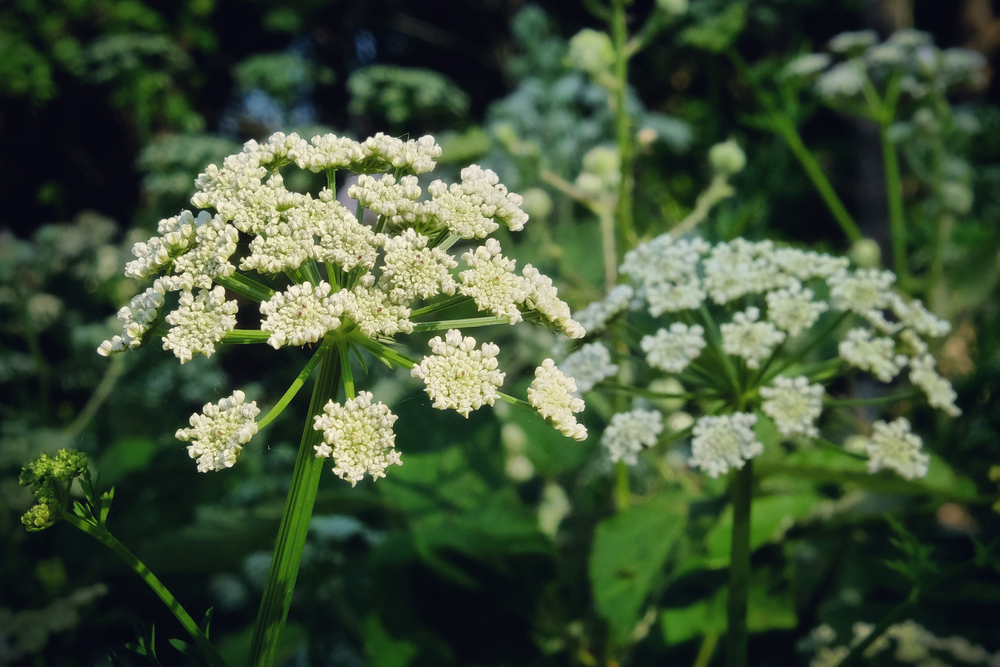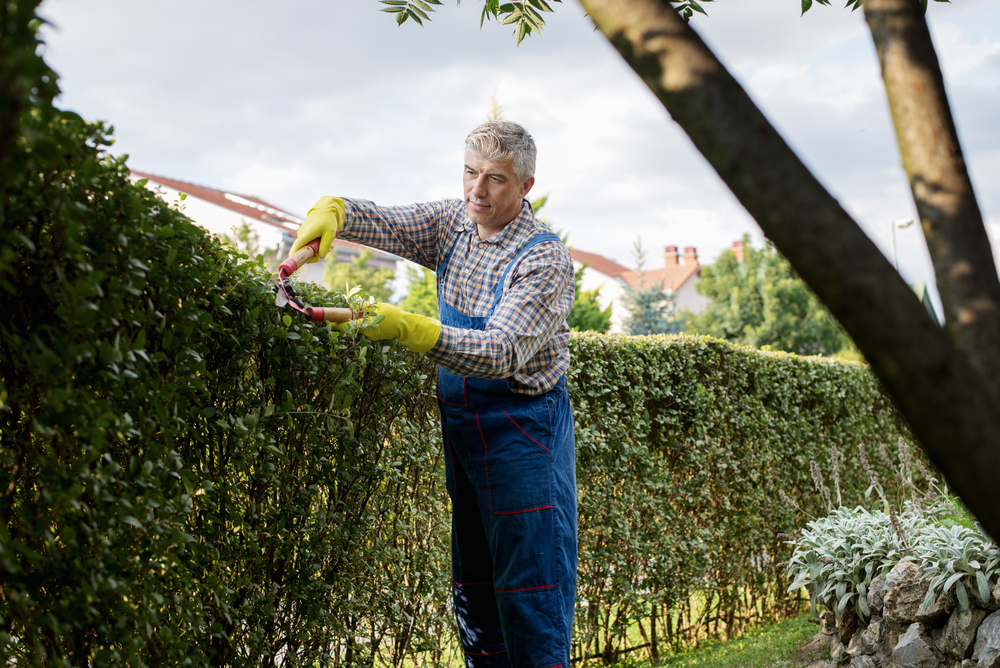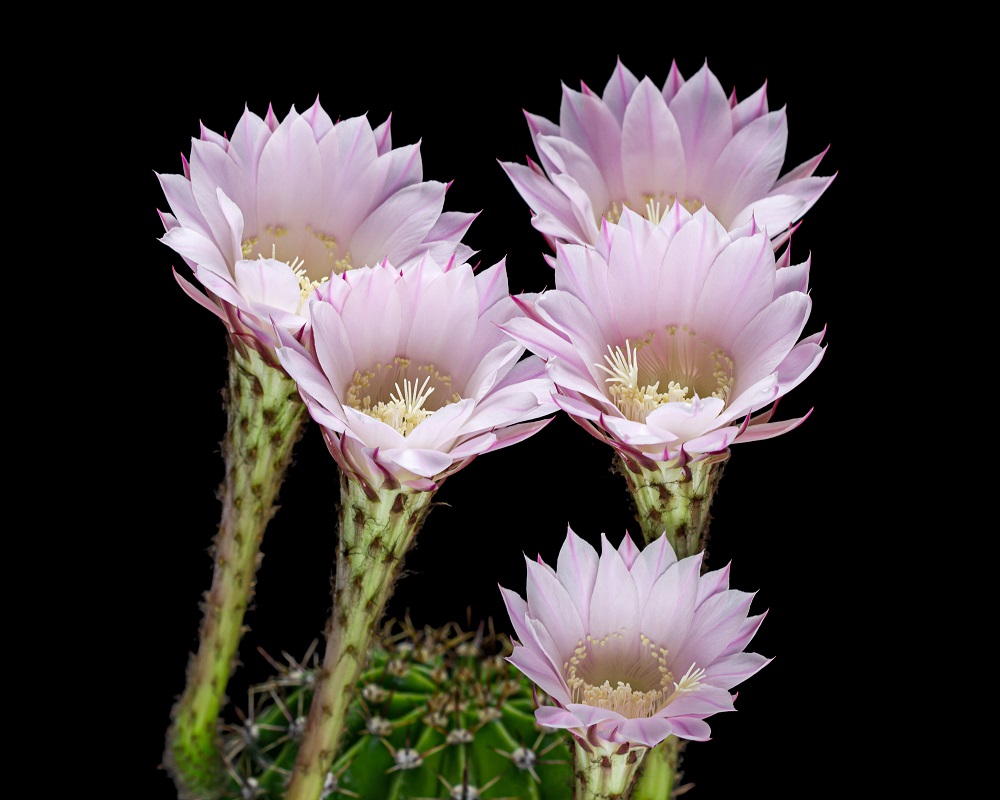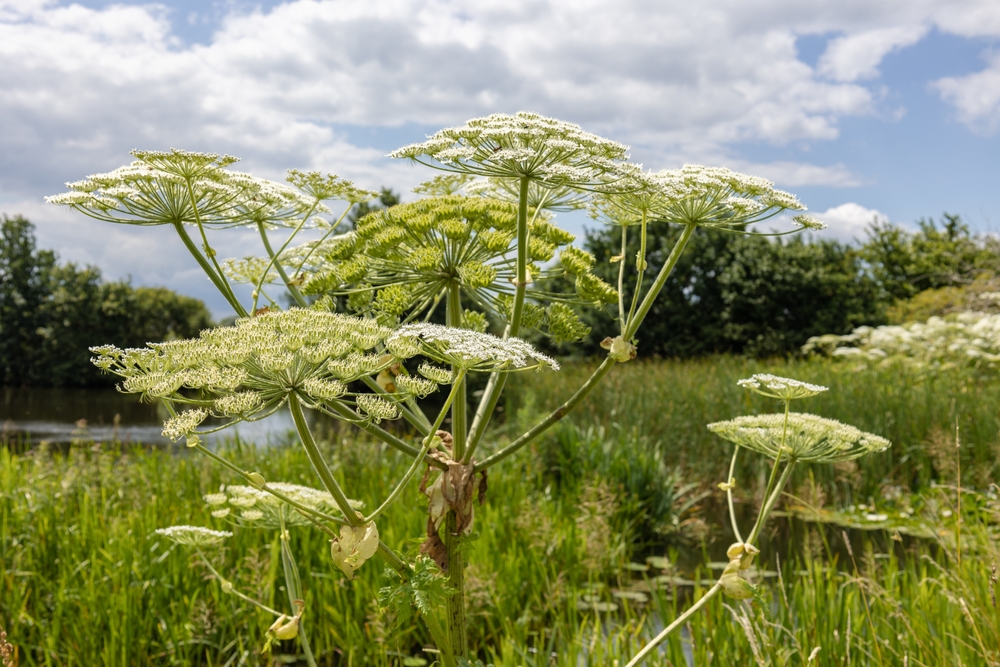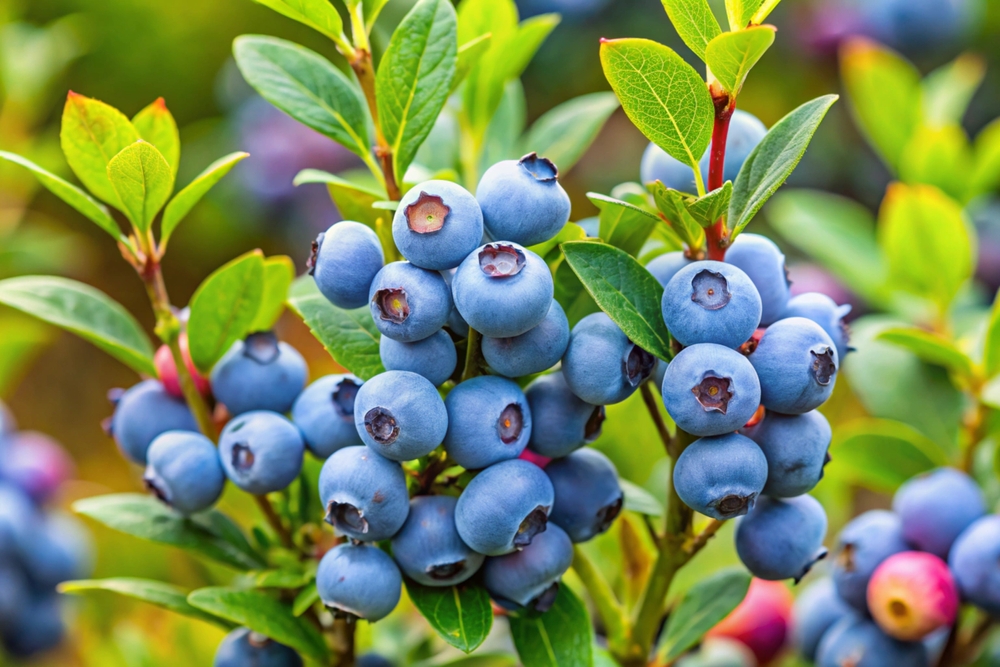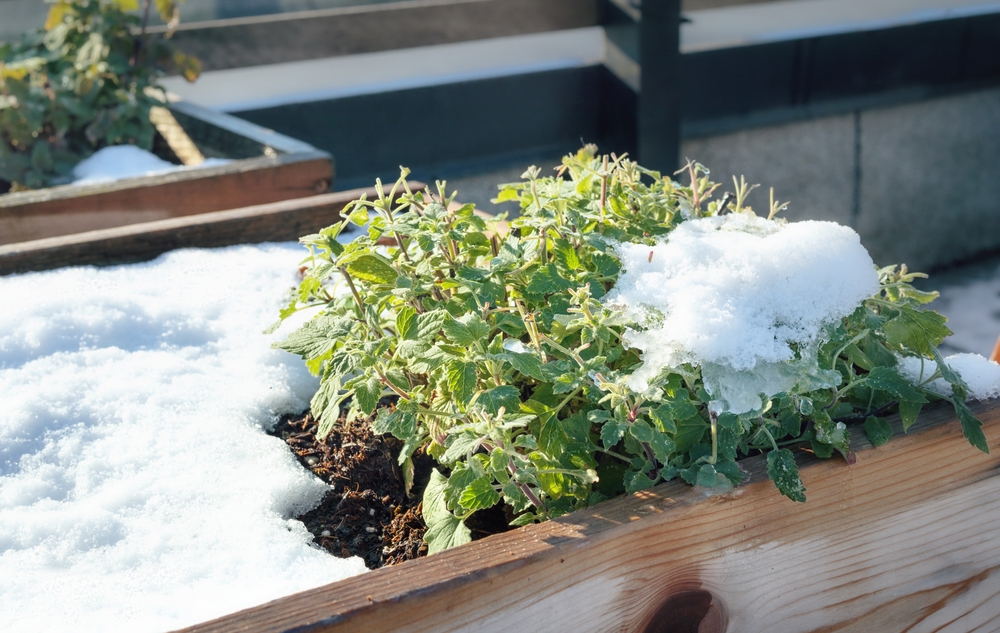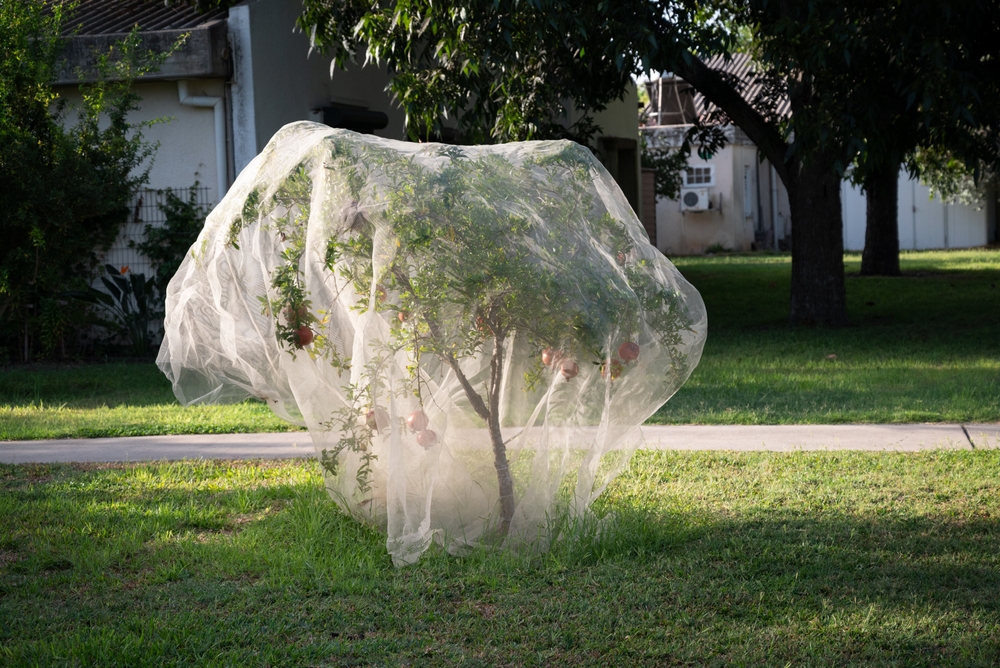Have you been wondering how to get rid of those pesky weeds?
While pests can be a pretty big problem, the biggest enemy of every gardener is, in fact, weeds!
And while some may think that we are being dramatic, think about it. You have the best spot for your plant, and you’re taking care of it, making sure it is growing well, and then you end up waking one day to it being smothered by weeds.
Not to mention, aggressive weeds can end up spreading like wildfire across your garden, and if you are not prepared, you can easily end up not being able to get rid of them unless you use some harsh chemicals and pesticides that could harm your flowers or crops!
Knowing the most common types of weeds and how you can easily get rid of them is one of the most important things you should learn as a gardener.
That way you can see if you have to get rid of them as soon as possible or if maybe they can be useful in attracting pollinators, and you can keep some in a corner of your yard.
What’s more, knowing what you’re dealing with can lower your garden workload significantly.
If you’re ready to discover some of the most common weeds and how you can deal with them, keep on reading!
What is one horror weed story you encountered? How did you deal with it in the long run? Share your experience in the comments!
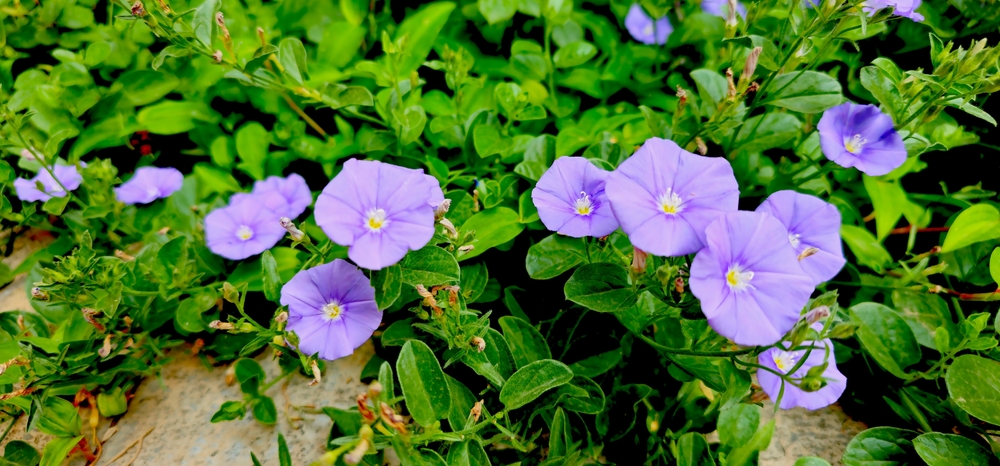
Bindweed (Convolvulus)
You may be familiar with bindweed, an invasive species of weed. While a lot of people tend to leave this plant alone, it is still an invasive species and once it has established roots in your garden, it can be pretty hard to deal with since it is a perennial.
Growing even as high as 6 feet tall, this climbing weed is known to wrap its way around your shrubs, crops, and plants, but also other parts of the garden. Many have seen it spread around garden structures and even around fences.
The reason why bindweed is hard to deal with is due to the fact that it spreads through seeds that are easily taken by the wind and that it has an extensive root system that can end up reaching down even around 9 feet!
This can mean that if you are not careful when removing it, you can still have to deal with it if you do not eliminate the roots completely.
The best way to get rid of bindweed is to pull it out or to cut the plant at ground level; you will have to repeat this action often if the roots are established since they can reach so deep in the ground.
If you cannot seem to get rid of it at all, you should look into authorized local services to come and spot-treat with herbicides.
Broadleaf Plantain (Plantago major)
This weed is one of the ones that grows throughout the whole nation, even popping up in the cracks in the sidewalks and making itself easily seen in turd grass due to the distinctive leaf pattern it has.
This weed is one to look out for since it also speeds by seeds, and it is one that can tolerate trampled, compacted soils, given its resilience at growing in the most unlikely spots, like the cracks in the sidewalk.
Since it speeds seeds, it can be easily picked up and moved around, so you should not be surprised if you end up seeing the distinctive leaves pop up in your yard.
In order to make sure broadleaf plantain does not end up spreading all across your lawn and that you keep everything in check, make sure you hoe out any unwanted guests the moment you see them.
Using a tool is easier since you will want to pull out the entire root system.
It does not have as extensive a root system as bindweed, but it is a persistent weed, and making sure you get rid of it completely fast is your best course of action.
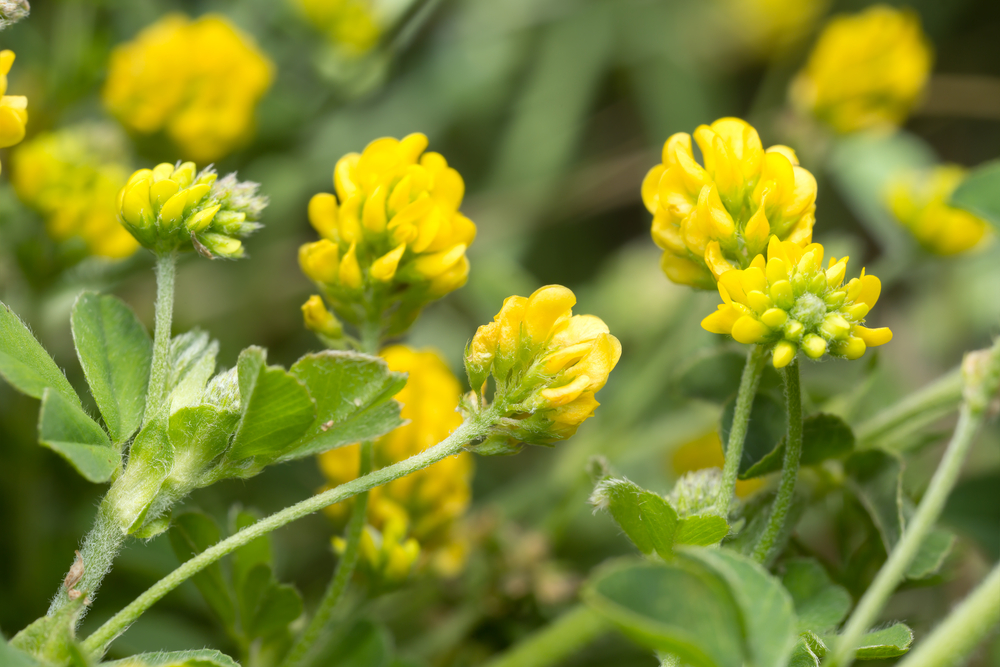
Black Medic (Medicago lupulina)
Black medic is a yellow flowering weed that ends up being seen in summer most often since it is an annual plant.
It generally grows in sunny, dry areas in a patch formation that can spread even up to 2 feet wide. Most often, if you have an area with thin turf on your property, there is a chance that this weed will make its appearance too.
If you are not paying much attention, it can look similar to clover due to the yellow flowers and the dark green leaves, but make no mistake. It is still a weed that can harm your landscape and turf area.
You can either take the route of building up your turf’s health to help it compete with this weed, or you can end up pulling out the weeds by hand.
After pulling them out, you should generally follow up with an appropriate herbicide, always following the instructions on the package so as to not accidentally harm your other plants.
Since it is an annual, black medic is easy to deal with despite being a common occurrence.
Chickweed (Stellaria media)
Another annual weed, chickweed, is one of the cold-hardy ones that will be seen mostly in spring and fall. They branch out in wide patches, and they will easily take over parts of your yard if you are not being careful with managing it.
It can end up making your lawn look bad, but there is a silver lining to this weed; it makes for a great addition to salads, and it can be easily pulled out by hand.
Just make sure that the species you have in your yard is Stellaria media before you end up adding it to the menu.
One thing to be careful of is that chickweed is a prolific seeder; if you are not careful, it will end up spending fast and take over every patch of land it can.
Make sure you nab the plants before they end up having the chance to seed.
A careful eye on your garden will do the trick, and you will be able to pick it up before it takes over.
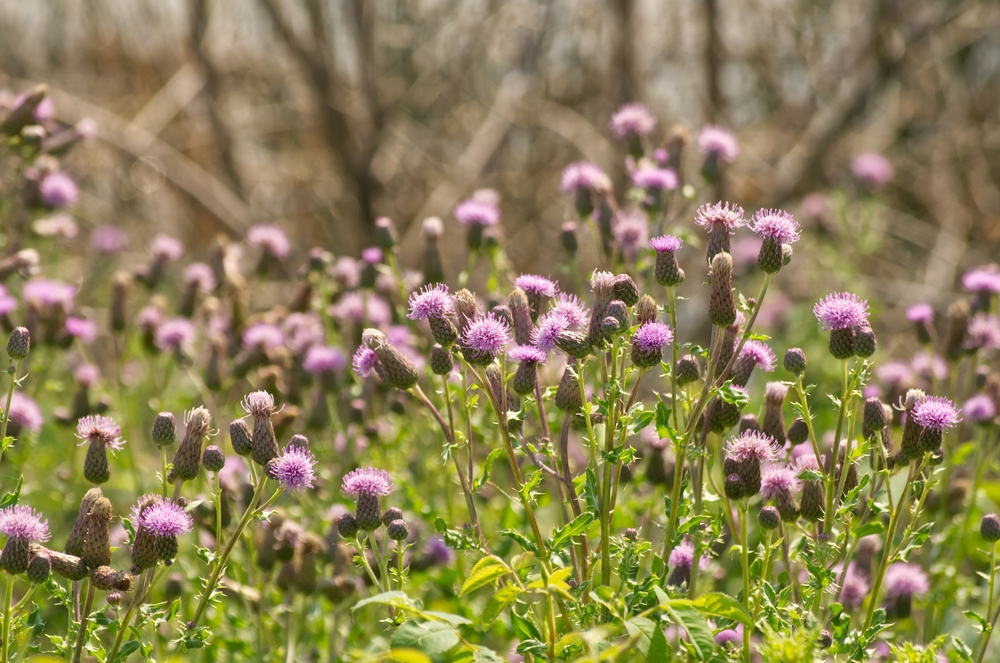
Canada Thistle (Cirsium arvense)
When people think of weeds, Canada thistle ends up being the plant that pops up in most people’s minds. It is definitely a weed that we have gotten used to seeing, especially in the wild, with its signature height and purple flowers.
Canada thistle can end up growing up to 5 feet tall if left unchecked, spreading through seeds and its root system, so you need to be careful if it has taken residence in your yard.
The weed spreads by creating patches of purple flowers, together with the signature prickly leaves.
This weed can end up causing some damage if you were to fall inside a patch, so you should make sure you keep it in check.
Unfortunately, this plant is a perennial, and to get rid of it, you will need to dig out the plants or cut them over several blooming seasons to slowly starve any leftover underground stems. Always wear gloves when dealing with this weed!
However, if you have a large infestation on your hands and you want it dealt with fast, you should ask a local extension service what the best herbicide treatments are for your issue.
If you just want to preserve your lawn and are not worried about other types of flowers, but you want a non-toxic herbicide, we recommend you give a try to the PetraMax Blue Herbicide Lawn Dye!
These are just some of the ways through which you can get rid of some of the most common types of weeds. However, if you want to get rid of weeds fast with something as simple as salt, check out this article here!

